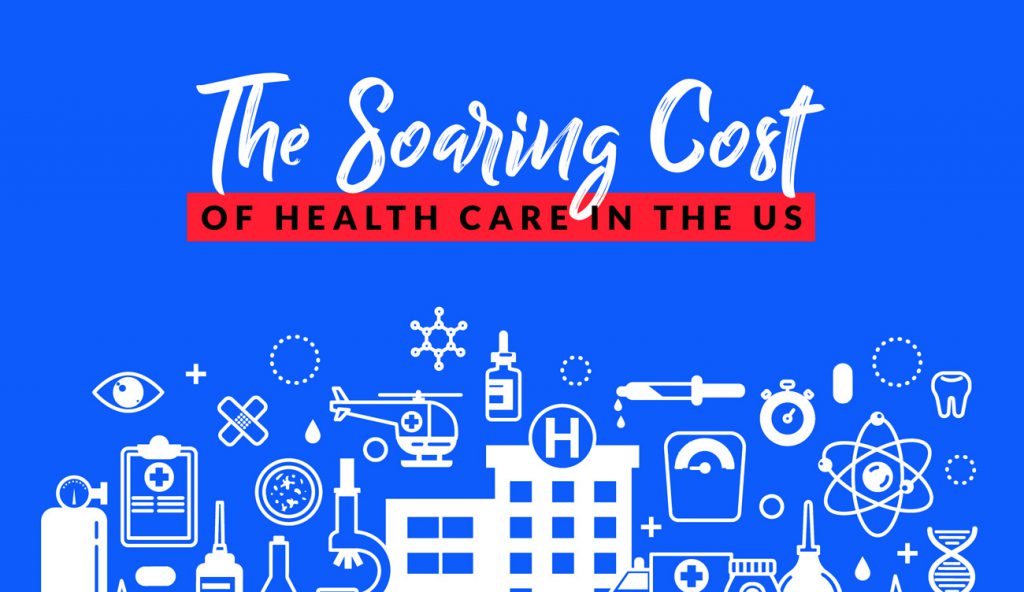
The Soaring Cost of Health Care in the U.S. and Current Cost-Cutting Initiatives
Overview
The U.S. Commerce Department’s Bureau of Economic Analysis recently announced that health care spending rose by 9.9% in the first quarter of 2014 -the largest quarterly increase in more than 30 years. It subsequently tapered off to register an increase of 5.5% for the whole of 2014, compared to 2.9% for 2013.
You’re reading one of our “Nursing Career Guide” articles. Need to practice for your upcoming exam? Take our free NCLEX practice test -- no registration required! ✨
Furthermore, the total United States spending on health care is estimated to rise to $4.8 trillion by 2021, up from approximately $3 trillion in 2013 ($9,523 per person), and up from $70 billion in 1970. By 2021, that level of expenditure would translate to one fifth of the U.S. economy (20% of GDP, up from 17.5% in 2014).
Growth Breakdown in 2014
The rapid growth in the cost of medical care in 2014 is attributable mainly to the significant coverage expansion brought about by the Affordable Care Act (ACA), as represented by Medicare and Medicaid:
Medicare: This accounts for 20% of total healthcare costs. In 2014, Medicare grew by 5.5% (to $619 billion), attributable to the 12.2% growth in prescription drugs, to the net cost of insurance, and to the rise in government administrative expenditures.
Medicaid: That accounted for another 16% of total healthcare costs. After growing by 5.9% in 2013, Medicaid costs rose by 11% in 2014. This broke down to less than 1% for local and state spending, and to more than 18% for Federal expenditures.
Identifying the Drivers of Rising Costs
Lifestyle issues: We are older, fatter and arguably more stressed than ever before. The resulting increase in the prevalence of chronic disease, together with the accompanying rise in demand for new and expensive medical technologies and pharmaceuticals, account for more than two thirds of the rise in overall costs.
Low consumer-sharing: An estimated 20 to 30 percent of all health spending goes to waste or on redundant care. Much of this inefficiency stems from the health care industry’s opaque and multi-layered structures. On the one hand, we never get to fully understand what health options are best for us and how much they cost, while on the other, we are insured and therefore lacking in incentives for making cost-saving decisions regarding our use of medical services.
Reforming the Fee-for-Service System (FFS): In the FFS system, payers reimburse providers for all services rendered, irrespective of their bearing on patient health or overall patient outcomes.
Fees are unbundled and submitted separately, paving the way for physicians and other providers to offer more treatments since reimbursement is based only on quantity of care. In addition, because of their precautionary adherence to providing defensive medicine, providers moreover tend to subject patients to endless tests, with no concern for cost.
FFS is thus unanimously tagged as an antiquated and out of control driver of soaring medical costs. As a result, there has been a concerted effort, mostly by Medicare and the health insurance industry, to replace it with evidence-based health care and a system that better incentivizes quality.
“Paying for performance” however requires that providers be able to have real-time coordination with other members of each patient’s medical teams and data-driven assessments which, in turn, begs for more state-of-the-art technologies.
Accountable Care Organizations (ACOs) thus became one of the most favored options for effective new models of care.
Examples of new reimbursement models that are underway include:
- Shared Savings: As part of the ACO programs enacted by the ACA, these remunerate providers who deliver care under an annual “benchmark” spending goal and observe quality standards.
- Bundled Payments: These are meant to discourage unnecessary tests while aiming for good patient results. Instead of reimbursing per line-item service, providers submit a lump sum that estimates total budgets for a specific case, for example a stroke.
- Promoting wellness: Both employers and Medicare are making significant strides in “reversing the curve”, namely by promoting wellness through regular exercise, healthy eating and weight-management. For example, the National Prevention Council revealed that annual medical costs are $2,000 greater for smokers, $1,400 greater for people who are obese, and $6,600 greater for individuals with diabetes than are costs for individuals without those conditions.
- Transparency: Transparency starts with medical care price information becoming available before consumers receive care, e.g. estimates of all costs associated with a particular service.
The provision of such estimates is however greatly impeded by factors such as not knowing in advance how a medical service will develop, billing from multiple providers, and the variety of insurance benefit structures. Providers would have to know the details of the consumer’s cost-sharing under health insurance plans, raising privacy, antitrust and other technical and legal issues.
- Liability Reform: In a 2013 paper published in the Journal of Public Safety, author John T. James, PhD, estimates that 400,000 unnecessary deaths occur annually in hospitals alone. Considering that less than one quarter of care takes place in hospitals, the numbers tend to be considerably higher when all care settings are accounted for.
In addition, a study from the Harvard School of Public Health found that as many as 40 percent of medical malpractice lawsuits they reviewed were groundless, wasting court resources and forcing defendants to expend unnecessary funds to defend themselves, and accounting for the billions of dollars in gratuitous annual expenditures on liability issues.
These have forced all categories of providers to practice “defensive medicine”, forcing many doctors to avoid certain specialties and producing exorbitant compensation and unnecessary legal fees.
Some 30 states have emulated European practices and enacted laws that promote an evidence-based medicine approach that protects providers and patients and put caps on the awards given for negligence.
Since 1975, California has had a $250,000 cap on non-economic damages in medical malpractice lawsuits, as well as limits on attorney contingency fees. And in 2003, Texas also passed a law that has a limit of $250,000 on non-economic damages against doctors and healthcare providers and an overall cap of $500,000 against healthcare facilities.
Since then, lawsuits against hospitals have decreased by more than two-thirds, and the state added more than 80 practicing obstetricians in one year.
- Hospital Readmissions: Reducing the number of unnecessary hospital admissions, readmissions and visits to the ER has emerged as an indispensable part of any cost-cutting initiative. Hospitals are thus expending significant resources on improving their discharge planning procedures, retraining the staff and providing the type of patient education programs that cut down on readmissions.
Towards those goals, case managers, discharge planning RNs and social workers at hospitals are promoting a greater use of medical teams provided by home health care services, as well as non-medical homecare agencies that assist aging individuals with their activities of daily living (ADLs).
Cost-cutting initiatives would thus promote additional community-based transitions programs that aim at providing precisely the type of daily home and local assistance that deters patients from being readmitted to hospitals for reasons that can conceivably be addressed locally. Those include Area Agencies on Aging, post-acute service centers, rehab facilities, physical therapy clinics and assisted living facilities that take transitioning patients for a limited number of days.
- Fraud and Abuse: According to the National Health Care Anti-Fraud Association, fraud and abuse that are associated with health insurance programs account for hundreds of billions of dollars annually, boosting overall costs on all stakeholders and exerting a highly unfavorable effect on medical care quality and safety. They frequently also cause great damage by exposing patients to unsuitable health care services, or by depriving individuals from their rightfully acquired services.
The ACA has allocated considerable resources aimed at cutting down on fraud and abusive behaviors. Among those are a 10-year, $350 million anti-fraud budget, cutting-edge technologies that target suspicious behaviors, heightened overall scrutiny of marginal stakeholders, and tough new sentencing guidelines for offenders.
Fighting Back
Based on figures that can be derived from Medical Expenditure Panel Survey (MEPS), approximately 80% of health care expenditures are linked to the chronically ill, i.e. patients with short-term, “inflexible” medical needs. While fraud, unnecessary testing and other reform programs can still reduce the cost of caring for this category of patients, prevention techniques are relevant only in the mid-to-long term.
And since there is no single recipe for the management of the soaring cost of medical care, stakeholders recognize that much common ground has already been identified and effective reform methods embraced.
Stepping away from the fee-for-service method of reimbursing providers has become one of the two top priorities in the fight against spiraling costs, the other being the widespread efforts by many corporations to provide their employees with abundant incentives to look after their own health.
Sponsors of this method are betting that preventive techniques will keep workers productive and help them remain out of the grip of costly diseases like hypertension and diabetes.
The Nurse.Plus Academy specializes in creating free NCLEX-RN practice tests, their other resource is cna.plus, which helps CNAs prepare for their certification.
Find out your chances by taking one of our practice tests.
Take a free test Reviewed by
Reviewed by 

